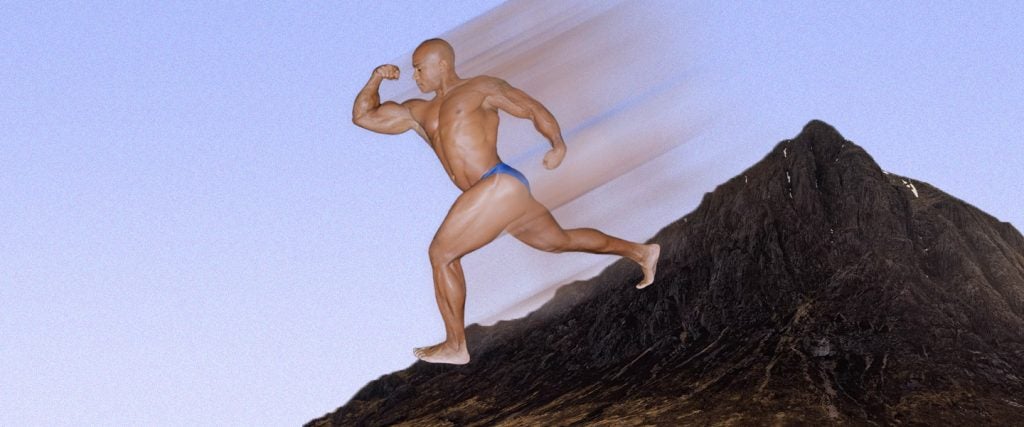When it comes to running, logic dictates that no variation will be more taxing than running uphill, with the possible exception of running through a hot desert while leaping from one cliff to the next.
Even your treadmill knows that running uphill is a barbarous act of self-destruction, which is why it naturally increases the rate at which it calculates your caloric burn as you elevate the incline of the tread. Not to mention how Kevin Costner’s McFarland USA spent oodles of time establishing how the team fell apart the first time they encountered a hill in competition, and then showcased the great lengths they went through in training to ensure that uphill running never resulted in their competitive undoing again.
But if what I’ve just stated is so undeniably true, why do I dread downhill slopes so much whenever I run — or even when I’m causally hiking? It’s not just the dread of presuming that my natural clumsiness will eventually cause me to lose my balance, that I’ll continue to roll inexorably downhill with nothing to slow my descent and that they’ll eventually be airing the extraction of my lifeless corpse out of a ravine during the evening news. (Don’t get me wrong, though; that’s part of it.) The bulk of the concern stems from the sheer awkwardness of the downhill plunge, the wild flailing of my limbs and the general lack of muscle control during the whole ordeal. For all the talk of uphill running being a dreadful training activity, at least it doesn’t leave me fearing for my life.
Nevertheless, just because you fear downhill running doesn’t mean you can avoid it. Almost without exception, what goes up must come down, and if you have designs on entering a decent number of 5Ks in your life, you’re going to need to learn to manage both uphill and downhill terrain — for peace of mind alone.
Why is it that downhill running is so hard?
You can mean a couple things when you ask that question, and I’ll address both of them just for the sake of being thorough.
For starters, if you’re asking why the technique of running downhill is so hard, it has a lot to do with the fact that much of what you believe to be instinctively correct about your downhill running technique is wrong. Downhill running presents you with a Bizarro World scenario in which your instincts are likely to get you hurt, so you have to learn to fight against your innate desire for self-preservation.
What do I mean by this? Your natural tendency when tackling a downhill grade is to slow down and lean back. Well, the strategy that works for Fat Joe at the club is going to cost you precious time during a race, and it’s also going to injure your quads if you maintain that suboptimal technique for long enough.
Even under the best of circumstances, downhill running results in the use of fewer muscle fibers being used, but with greater intensity endured by the muscle fibers being activated — specifically in the quads. The impact forces increase by up to 50 percent during downhill segments, while the braking forces increase by 75 percent. This can cause small tears in the muscles, leading to delayed onset muscle soreness.
I don’t want to get injured, but I don’t want to lose too much time either. What should I do?!
The preferred technique for downhill running requires you to lean forward instead of backwards so that your shoulders are aligned with your knees. Also, don’t shorten your stride too much, but focus on achieving quick contact with the ground. Wave your arms to keep yourself balanced, and be sure to keep your head up. You also want to focus on feeling like you’re keeping your legs soft at the point of contact so that you’re not forcing your joints to absorb too much impact from the ground.
You make it sound so easy! Is there anything else I should do?
Yes: Practice. And make sure you’re wearing shoes that are suitable for the terrain you’ll be tackling. Because even though having the best technique in the world and a pair of course-optimal shoes won’t necessarily prevent you from taking an embarrassing tumble as you contend with a sandy hillside, you still don’t want to make it too easy for gravity to ruin your afternoon.

